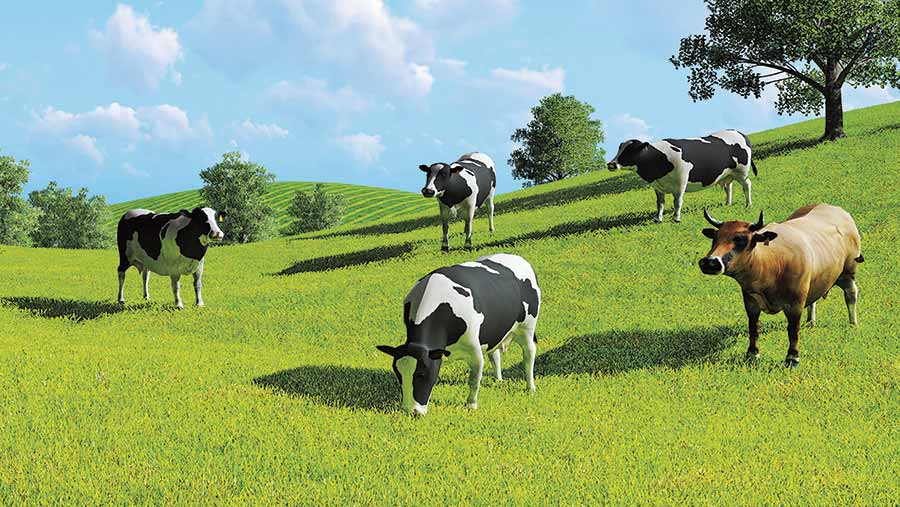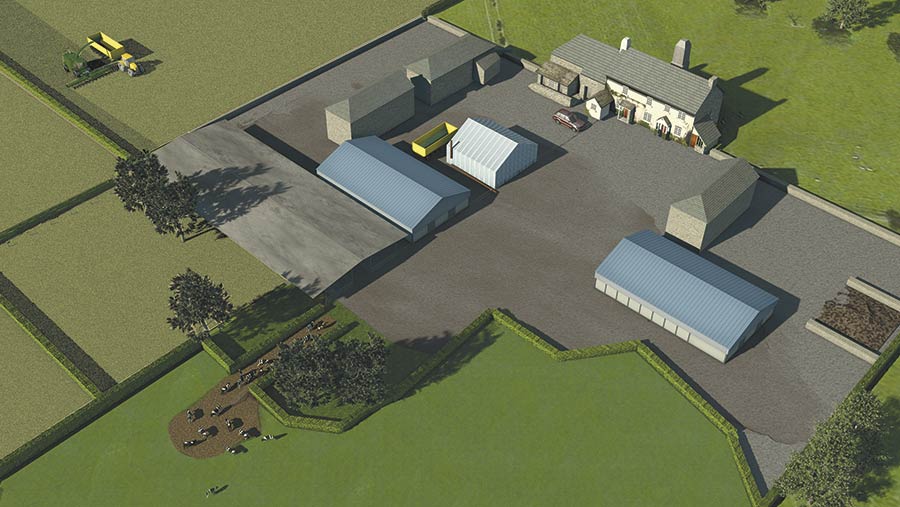Model Dairy Farm: Budget revised down after long winter
 © DMG Vision/Shutterstock
© DMG Vision/Shutterstock One of the longest winters in living memory has forced the Savills Model Dairy Farm, like many others, to revise its budget down for the financial year ending 31 March 2019.
Milk price expectations have been cut to 26p/litre, from the 28p/litre average originally expected for the current milk year, with a production drop of 50,000 litres adding to the pain.
“Some might think the 26p/litre budget milk price pessimistic,” says Charles Skelton, associate director of Savills Food and Farming.
See also: Virtual farm – focus on crop concerns and future support
“We recognise that there have been recent milk price improvements but budgets need to recognise the volatility we have seen in milk prices.”
Wet weather across the traditional spring flush has meant the herd had to remain indoors for an extra 30 days, bringing an extra £2,000 in bought-in feed costs.
The revisions also included extra herd replacements and cumulatively added 3.66p/litre to the farm’s total cost of production, taking it to 34.99p/litre although this includes the family’s £40,000 of drawings.
This leaves a slender full net margin of just 1.39p/litre.
The drop in financial performance was compounded by a fall in herd performance as well as an ailing milk price in the second half of 2017 and beginning of 2018.
Weather pushes costs up
With lower production and higher use in many cases, every item of cost has risen on a pence a litre basis.
This means the farm’s overdraft will peak at a worrying £120,000, before receipt of BPS (hopefully in December) and then drop back to just over £77,000, a similar level as at the end of 2017-18.
As part of what has of necessity been a stop-start expansion plan, another 31 heifers are set to join the herd this year, bringing the milking portion to 266 animals by 31 March 2019.
The family is committed to its long-term target of 300 cows. Herd replacement is a big cost in an expansion such as this one, says Mr Skelton, but the large heifer numbers being kept also give the farm flexibility.
In total, 100 heifers are planned to calve in the current milk year, with some being sold as an overdraft management tool if necessary.
The guarantee of BPS injects an additional £39,000 into the business, worth the equivalent of about 1.9p/litre.
While the farm’s fodder stocks were sufficient to get it through the long winter, it may be necessary to open the 2018 production clamp earlier than in recent years as the buffer has now been consumed.

© Paul Wootton
Milk confidence evaporating
The revised budget has reinforced the importance of the farm’s milk income to the business.
However, the 2p/litre fall in the budgeted milk price has highlighted the frailty of the farm’s financial position, especially when looking forward to a time without subsidies.
So in an attempt to create greater financial security, the farm is in discussion with its milk buyer to lock in a percentage of its milk at a fixed price for up to three years at 28p/litre.
This option will allow the farm to rely on a steady income stream until 2021, the final year before subsidies are expected to see significant reform and likely be linked to environmental goods.
Practical measures
In the short-term, the farm’s top priorities remain herd expansion as well as increasing yield from forage, while increasing total milk yield in order to reduce costs.
To achieve this, the business is looking to improve silage quality, mixed forages and ration management.
Despite the low prices and bad weather making it difficult for these improvements to come to fruition in 2017, the quantity of land that’s been able to be allocated to silage and its anticipated high quality could leave the farm in a positive position next year.
In the longer term, the Savills Model Dairy Farm is questioning the use of all machinery and equipment used by the business to see if efficiency savings can be achieved from replacing them with contractors.
Further potential savings are being examined through the construction of a borehole on the family’s land to reduce the expenditure from metered water.
Savills Model Dairy Farm – What is it?
- A fictional dairy farm, fully costed and based on dairy businesses advised by Savills. This allows scenarios to be modelled and their affects assessed.
- Family partnership of parents and son.
- 180ha farm, mainly ring-fenced.
- 160ha owned, 20ha on 10-year farm business tenancy.
- One full-time employee.
- All Grade 3 medium/heavy soil type on undulating terrain.
- The business has a 20-year loan taken out several years ago with a balance at 1 April 2017 of £163,776. This is being reduced to £15,000/year, and at 1 April 2018 was £148,776. There is also an improvement loan, initially at £250,000, repayable over 10 years – balance at 1 April 2018, it was £177,000
- Rainfall 760mm, altitude 125-180m.
- Located in a nitrate vulnerable zone.
Recent history
The business is on a non-aligned milk contract and was affected by the drop-in milk prices in 2016.
Performance was on target at about 8,100 litres a cow, but the original budget to March 2017 showed a trading loss of £20,000 and a rise of more than £110,000, so action was taken to reduce this. This involved slowing the planned expansion and selling 50 head of cattle, reducing herd size to 215 head at 31 March 2017.
This also provided an opportunity to turn a planned wholecrop wheat area into a grain crop to generate cash in the short term.
Despite these measures the year still produced a trading loss £15,739, although the overdraft rise was limited, closing the year at £70,940.
